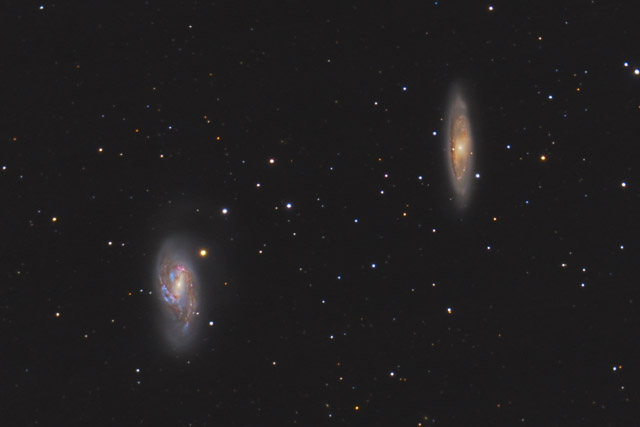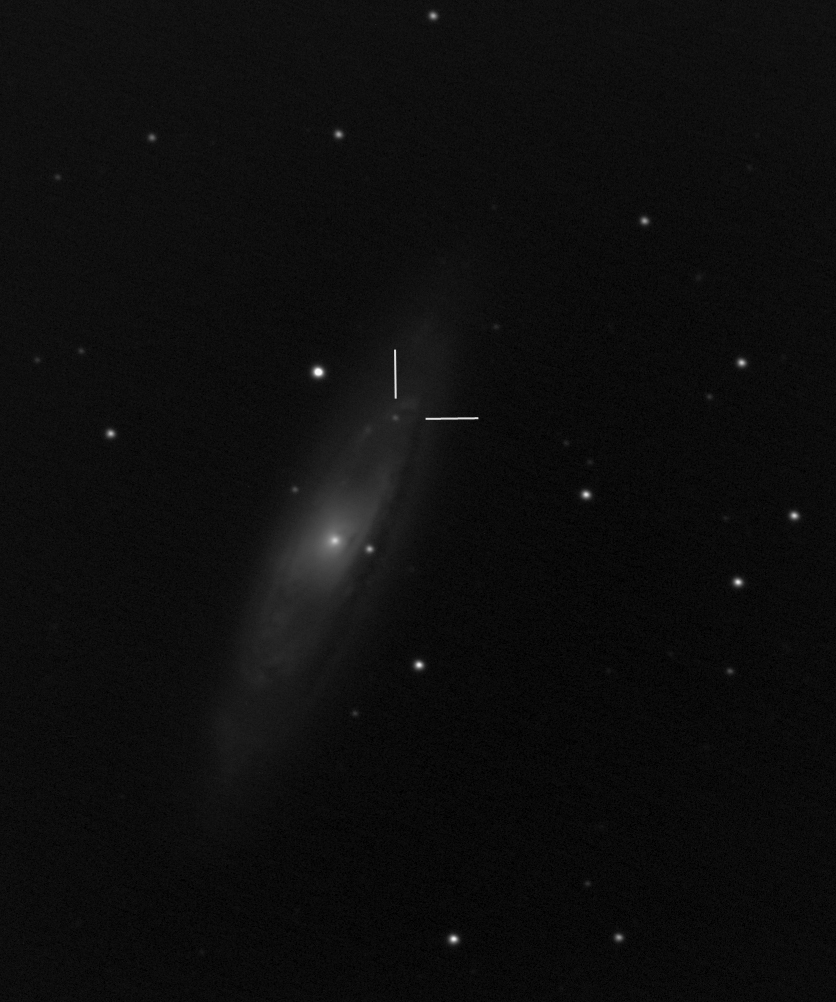Supernova in M65!
Posted: Sun Mar 31, 2013 7:08 pm
There is a supernova in M65, SN 2013am, and I find it so interesting.
 M65 is a quite red galaxy, with extremely little star formation. In Al Kelly's picture of M65, however, you can see a blue cluster at about 2 o'clock and a bluish "arc" of young stars "above" the cluster. Apparently the supernova is located close to this "arc" of young stars. Check out Efrain Morales' picture of M65 with SN 2013am here.
M65 is a quite red galaxy, with extremely little star formation. In Al Kelly's picture of M65, however, you can see a blue cluster at about 2 o'clock and a bluish "arc" of young stars "above" the cluster. Apparently the supernova is located close to this "arc" of young stars. Check out Efrain Morales' picture of M65 with SN 2013am here.
A galaxy so full of old stars, and so deficient in young stars, might be expected to produce a supernova type Ia. After all, almost all galaxies can be expected to contain white dwarfs, some of them in orbit around swollen red giants that white dwarfs can feed off of and gain mass. But if you enlarge Efrain Morales' image, you can see that the supernova appears to be non-blue. That suggests that it is not a supernova type Ia. And indeed, according to www.rochesterastronomy.org, SN 2013am is a supernova type II, a massive core-collapse supernova. But if so, the progenitor of SN 2013am must be a massive and therefore young star. And fascinatingly, the supernova exploded right next to one of the extremely few places in M65 where we find young stars. Note that no pink emission nebulae are visible in M65, so there appears to be no ongoing star formation there. But there are a few massive young stars there that are just old enough to start going supernova, and one of them exploded. Wow.
To fully appreciate how red M65 really is, and how deficient in young stars it is, please compare it with its galactic neighbour, M66. In Scott Rosen's image on the left, you can see how very yellow M65 is compared with M66, which contains large bright blue clusters and pink emission nebulae.
But one of the young stars that M65 almost doesn't have did go pop.
Ann

M65. Photo: Al Kelly.
A galaxy so full of old stars, and so deficient in young stars, might be expected to produce a supernova type Ia. After all, almost all galaxies can be expected to contain white dwarfs, some of them in orbit around swollen red giants that white dwarfs can feed off of and gain mass. But if you enlarge Efrain Morales' image, you can see that the supernova appears to be non-blue. That suggests that it is not a supernova type Ia. And indeed, according to www.rochesterastronomy.org, SN 2013am is a supernova type II, a massive core-collapse supernova. But if so, the progenitor of SN 2013am must be a massive and therefore young star. And fascinatingly, the supernova exploded right next to one of the extremely few places in M65 where we find young stars. Note that no pink emission nebulae are visible in M65, so there appears to be no ongoing star formation there. But there are a few massive young stars there that are just old enough to start going supernova, and one of them exploded. Wow.
M66 at left and M65 at right. Photo: Scott Rosen.
But one of the young stars that M65 almost doesn't have did go pop.
Ann

